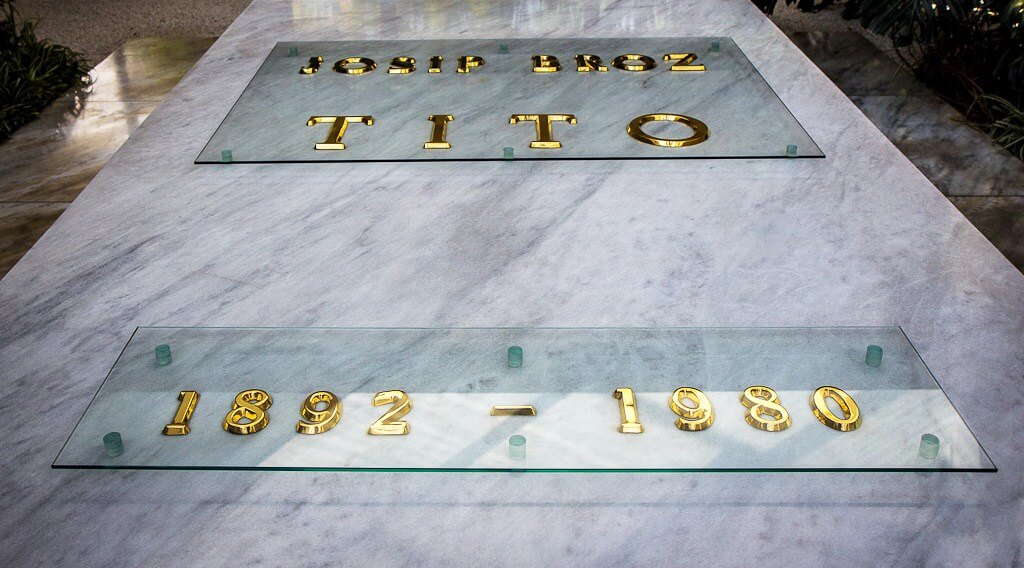To understand Serbia and the relationship with its neighbours today, you need to look back many decades. You need to look back to the time when Yugoslavia brought together most of the Balkans under the one country. And, most importantly, you need to know more about Marshal Josip Broz Tito – a man referred to simply as Tito.
He was the ruler of Yugoslavia for almost 40 years – as Prime Minister from 1943–63 and then President from 1953–80. And, despite his fair share of controversy, he kept the country intact and above much of the conflict that happened around it.
While the Cold War was being fought from either side of Yugoslavia, Tito intentionally stayed non-aligned and, in the process, oversaw a burgeoning economy in the 1960s and 1970s. While he was criticised by some for being authoritarian, generally Tito was considered to be a benevolent dictator.
Marshal Tito’s Grave, Belgrade
 Today his grave is still given the reverence you might expect from someone who had such an impact on this country. In a suburb of Serbia’s capital Belgrade, about an hour’s walk from the centre of the city, a mausoleum has been built for his remains. It’s not of the scale of similar communist memorials in Beijing, Moscow, Ho Chi Minh City or Pyongyang. In fact, in comparison, it is very restrained. The building is called the House of Flowers and it is amongst an enclosed flower garden that his grave lies. A large protruding slab of marble with his name in gold marks the spot.
Today his grave is still given the reverence you might expect from someone who had such an impact on this country. In a suburb of Serbia’s capital Belgrade, about an hour’s walk from the centre of the city, a mausoleum has been built for his remains. It’s not of the scale of similar communist memorials in Beijing, Moscow, Ho Chi Minh City or Pyongyang. In fact, in comparison, it is very restrained. The building is called the House of Flowers and it is amongst an enclosed flower garden that his grave lies. A large protruding slab of marble with his name in gold marks the spot.
For many years there was a permanent guard of honour stationed at the entrance but these days there’s just an elderly cigarette-smoking man reading a newspaper keeping an eye on things.
The grave is within a larger compound – called the Museum of Yugoslave History (with nominal entrance fee) – and the other main building is a long exhibition hall showing the presents given to Tito during his leadership.
The number of gifts is very large. It demonstrates how Marshal Josip Broz Tito kept Yugoslavia strong externally and internally. He promoted the unity of the six main Yugoslav republics and they lived relatively peacefully together. By keeping his own house in order, he was able to deal internationally from a position of respect.
Nothing would have happened to threaten the peaceful coexistence of the nations of Yugoslavia during his leadership and life – both of which ended on the same day. It was not until his Presidency was over that tensions began to appear and the current makeup of the Balkans began to take shape.
For that reason Tito is still divisive. He is seen by some as the man who oversaw one of the most peaceful and prosperous periods this region has ever had. Other see him as the man who stopped the rightful realignment of the six nations. Although what he did, he did well, there is considerable debate about whether it was the right thing.
He is a man who is still an important part of recent history. The respect given to his grave – despite neither prominence nor pomp – shows that. It’s worth a visit in Belgrade for this alone.
Michael Turtle